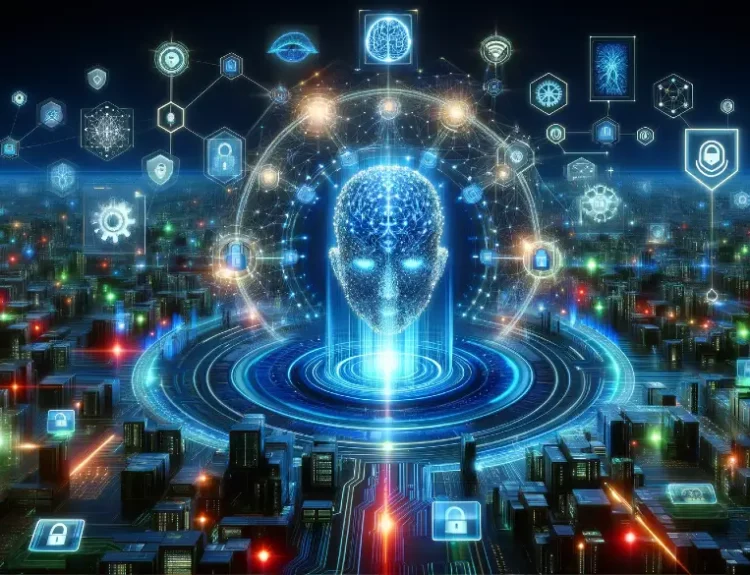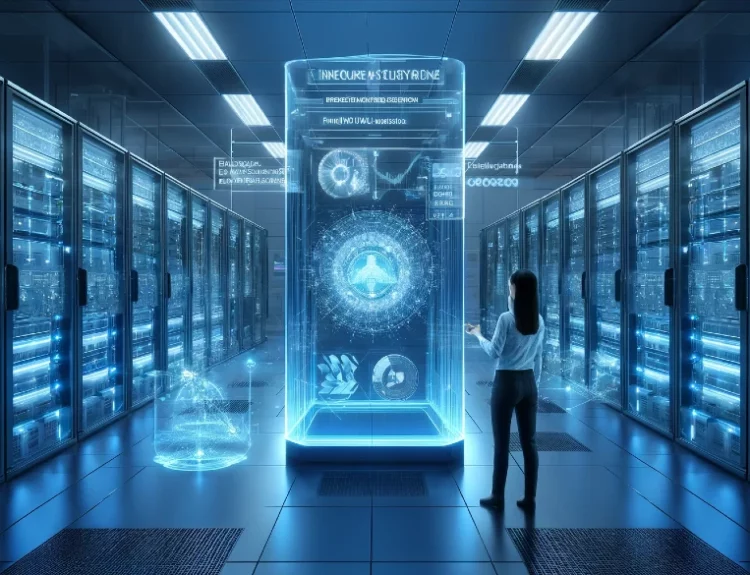Introduction
The digital frontier is a vast and ever-evolving landscape. While it offers incredible opportunities for connection and innovation, it also harbors a constant threat: the relentless evolution of cyberattacks. Computer viruses, once the realm of science fiction, have become a sophisticated and adaptable foe. Traditional defense methods struggle to keep pace, leaving our systems vulnerable.
But on the horizon, a new champion emerges: Artificial Intelligence (AI). AI offers a powerful weapon in the fight against these digital threats. By harnessing the power of machine learning and intelligent algorithms, AI can analyze vast amounts of data, identify complex patterns, and adapt to new threats in real-time. This blog will delve into how AI is revolutionizing cybersecurity, exploring its applications in virus detection, threat analysis, and building a future-proof defense.
The Traditional Approach vs. The AI Advantage
For decades, cybersecurity relied on signature-based detection methods. This approach works by identifying and blocking viruses based on pre-defined patterns, like digital fingerprints. While effective against known threats, this method has significant limitations:
- Limited Scope: Signature-based methods can only detect viruses they’ve already encountered. New and mutated viruses easily slip through the cracks.
- Static Defense: These methods are static, unable to adapt to evolving threats. Hackers constantly modify their viruses, rendering signatures obsolete.
- Manual Updates: Maintaining signature databases requires constant updates, a time-consuming and resource-intensive process.
AI offers a significant advantage by overcoming these limitations:
- Adaptive Defense: AI can learn and adapt to new threats. By analyzing vast amounts of data on malware behavior, AI can identify previously unseen patterns and adjust its detection methods in real-time.
- Advanced Threat Recognition: AI excels at identifying complex patterns and anomalies in network traffic and system behavior. This allows it to detect sophisticated attacks that might bypass traditional signature-based methods.
- Continuous Learning: AI is constantly learning and evolving. As it encounters new threats, it refines its detection capabilities, offering a more proactive and dynamic defense.
AI’s Arsenal
The fight against cyber threats is an ongoing battle, and AI offers a powerful arsenal of tools to combat this ever-evolving enemy. Let’s delve into some of the key applications of AI in virus protection:
- AI Algorithms for Real-Time Threat Identification: AI can analyze network traffic and system behavior in real-time, searching for anomalies that might indicate a potential attack. These algorithms can identify suspicious activities like unusual file transfers, unauthorized access attempts, or sudden spikes in network traffic.
- Machine Learning for Anomaly Detection: Traditional methods struggle to identify never-before-seen threats. Machine learning, a subset of AI, excels in this area. By learning from historical data on normal system behavior, AI can detect deviations from this pattern, potentially uncovering hidden threats lurking within your network.
- Predictive AI: Taking defense a step further, AI can analyze past attack trends and identify vulnerabilities in your system. This allows for a more proactive approach to cybersecurity, enabling you to anticipate potential attacks and take steps to mitigate them before they occur.
Humans and AI Working Together
While AI offers significant advantages in cybersecurity, it’s important to remember it’s not a silver bullet. The true power lies in a collaborative approach that leverages the strengths of both humans and AI.
- **Human Expertise: **AI excels at data analysis and pattern recognition, but it lacks the critical thinking and decision-making skills of human analysts. Human expertise remains crucial for:
- Contextual Understanding: Humans can interpret the data analyzed by AI and understand the broader context of a potential threat. This helps them determine the appropriate course of action.
- Strategic Decision-Making: Complex security decisions often require weighing risks and benefits. Human judgment plays a vital role in formulating a strategic response to cyber threats.
- AI Augmenting Human Capabilities: AI can significantly enhance the work of human analysts by:
- Automating Routine Tasks: AI can handle repetitive tasks like sifting through vast amounts of security logs, freeing up analysts to focus on complex investigations and threat analysis.
- Providing Deeper Insights: AI can uncover hidden patterns and anomalies in data that might escape human attention. This allows analysts to identify and investigate potential threats more efficiently.
The future of cybersecurity lies in this powerful collaboration. By combining the analytical power of AI with the experience and judgment of human analysts, organizations can build a robust and adaptable defense against ever-evolving cyber threats.
Building a Future-Proof Defense with AI
As we’ve explored, AI is rapidly transforming the landscape of cybersecurity. Here at Verdict, we believe the key to a truly secure future lies in harnessing the power of AI and fostering a collaborative environment for its development.
Verdict is more than just another AI platform. We’re building a future where Machine Learning (ML) and Artificial General Intelligence (AGI) evolve through real-world interactions and the collective wisdom of our community. Every search, discussion, and shared result on Verdict contributes to building an AI that understands and grows alongside you. It’s a building block for a future where AI reflects our diversity, learns from our experiences, and expands with our collective knowledge.
Our platform leverages cutting-edge AI for advanced threat analysis. By incorporating diverse perspectives and real-world data into our AI development process, we aim to create a future-proof defense against cyber threats. This collaborative approach ensures that our AI stays ahead of evolving threats and adapts to the ever-changing digital landscape.
Conclusion
In conclusion, AI is revolutionizing the fight against cyber threats. Its ability to learn, adapt, and identify complex patterns offers a powerful defense against the ever-evolving tactics of cybercriminals. By leveraging AI’s capabilities alongside human expertise, organizations can build a more robust and proactive security posture.
Ready to explore the potential of AI in safeguarding your digital frontier? Head over to Verdict AI and discover how our platform can help you build a future-proof defense. Join our vibrant community and contribute to the development of a powerful AI that learns and grows alongside you.
Looking for more insights on the future of technology? Don’t forget to explore our blog page, where you’ll find a treasure trove of informative articles on cutting-edge advancements, including:
- The Role of AI Computer Vision Engineers: Delve into the fascinating world of AI vision technology and the specialists who bring it to life.
- Revolutionizing Computing: AI in Computer Rigs: Explore how AI is transforming the way we build and utilize computers.
These are just a few examples – we’re constantly adding new and exciting content to our blog! Visit us today and embark on a journey of discovery with Verdict AI.










